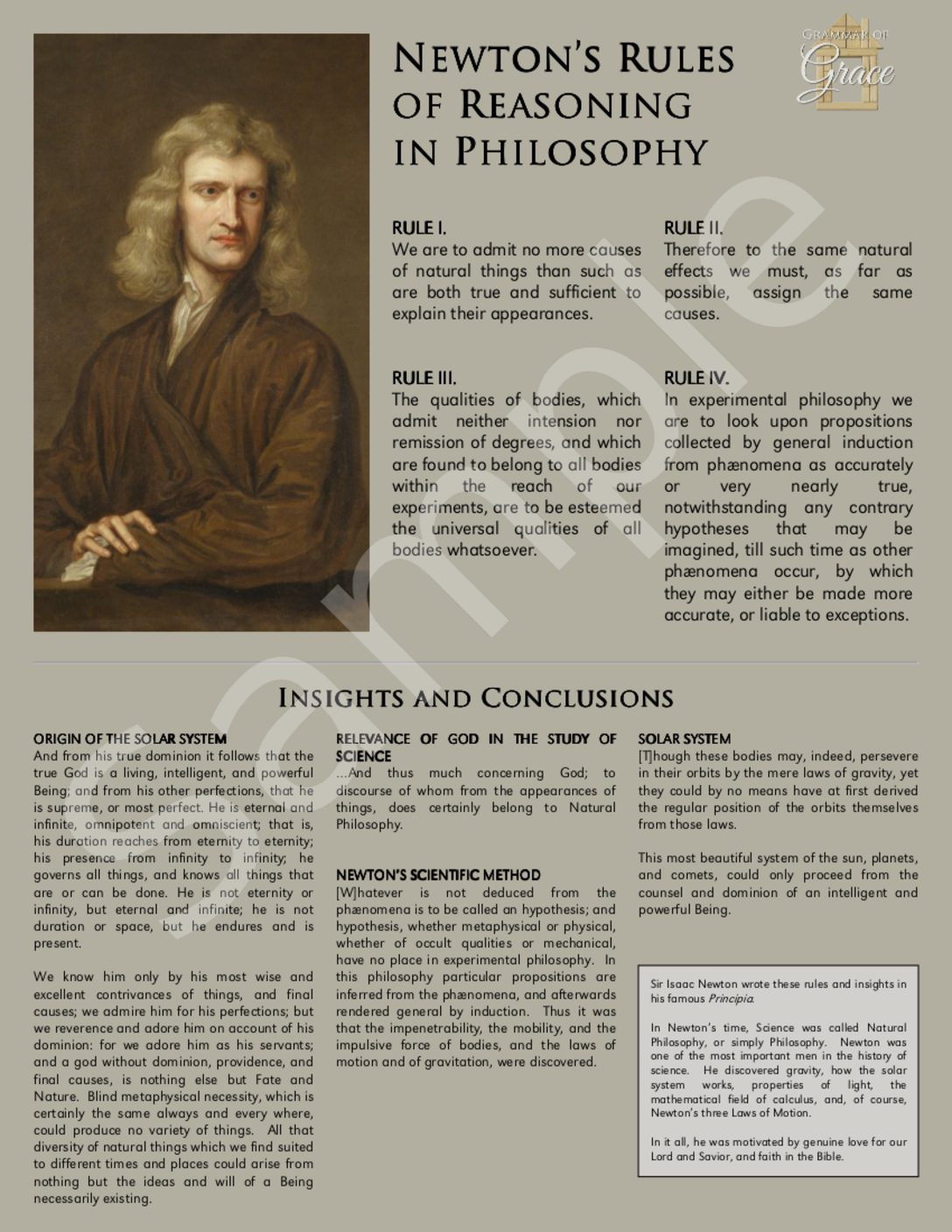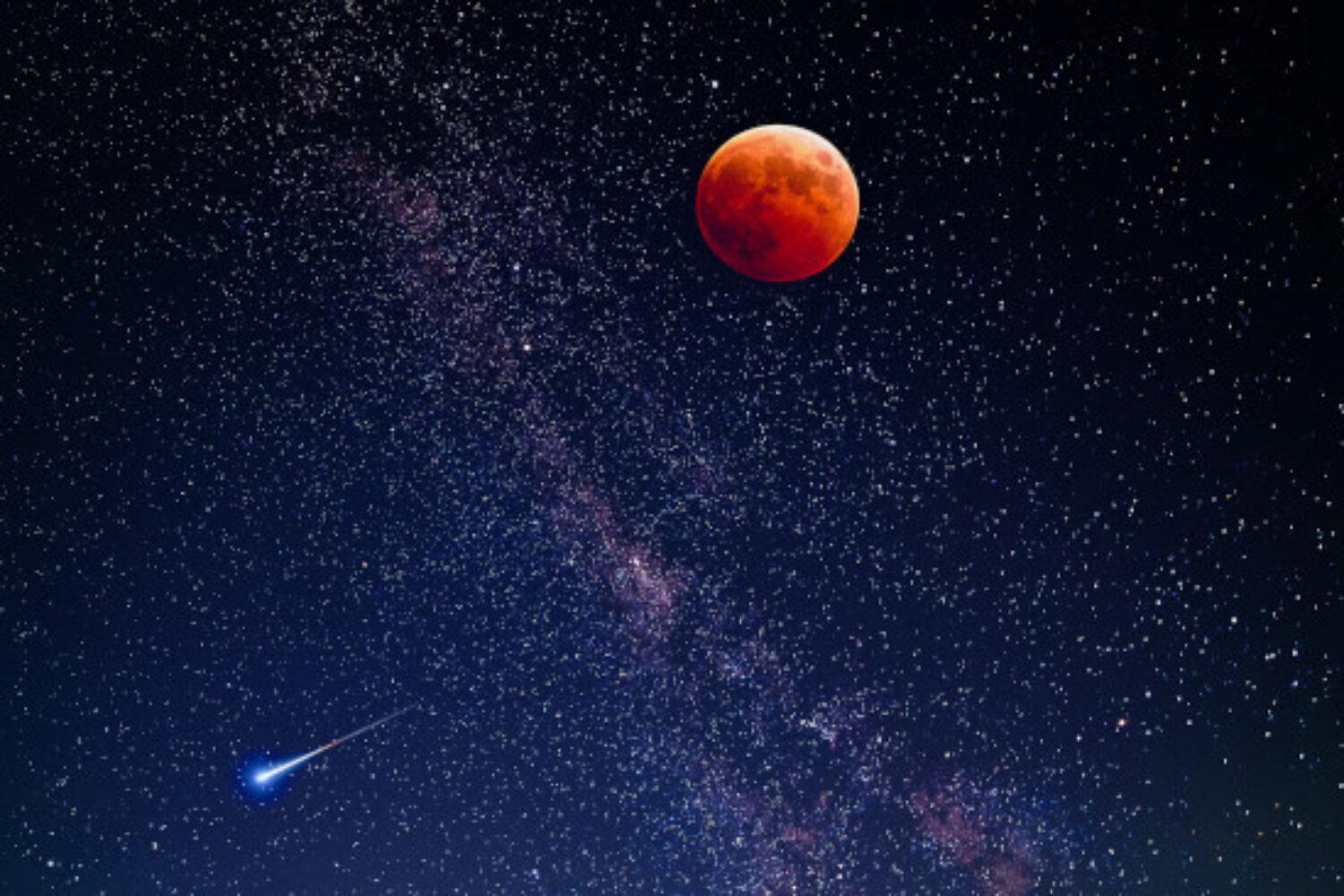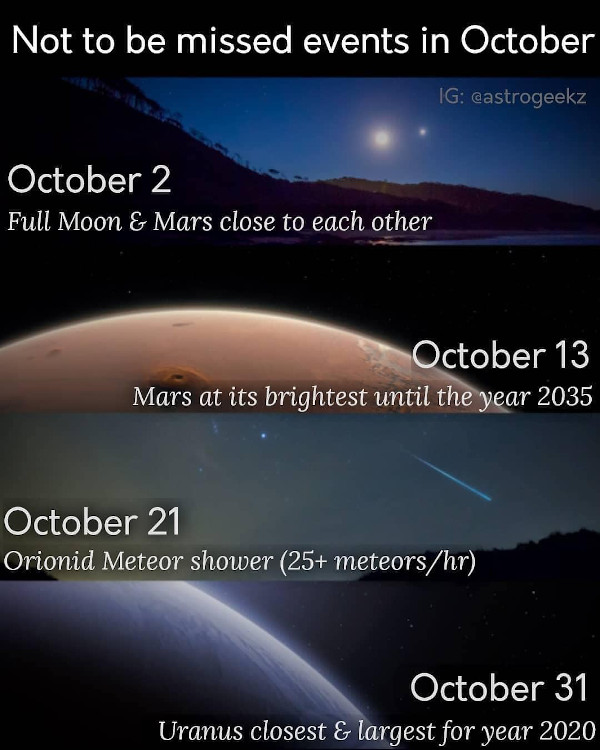Photo by Nick Owuor on Unsplash
We’re beginning the unit on Astronomy in our local Wisdom’s Way, this week!
But the funny thing about Astronomy is that you can’t study any of the most important stuff in the classroom; you have to go out at night. Doing astronomy is really a family activity.
What’s even better, in God’s providence, this month—October, 2020—is a particularly great time to look up and see some great sights in the night sky, so, Christian classically-minded parents, take advantage of it! (If this is really tough for you, just imagine Dr. Cornelius taking Caspian up to the tower for his astronomy lessons. You may not be half-dwarf, but you can at least get your young ones to start looking!)
I’m attaching an infographic (below), and I’ll share some additional notes about what to look for, and how. Take the children out into the backyard once or twice this month, after they’re all ready for bed and in their pj’s! Looking at the stars doesn’t have to take a long time, and it’s not magical, but when you take the time to study and get to know the beauty God has set for us in the heavens even a little bit, you and your children will begin to find a world of knowledge and understanding unfold before you—from navigation and situational awareness to physics, chemistry, geometry, and—of course—creation! Truly, the heavens declare the glory of God! Day to day utters speech, and night to night pours forth knowledge. (Psalm 19:1-2)
There are some great sights to see this month, the weather is lovely, and it’s getting dark earlier now, so you don’t even have to keep the children up late to see many of these things. This is a blessed time to dip your toes into the sweet waters of Astronomy!
October Astronomy Night Tips
Again, I’ve posted a cute infographic for you, below, but here are some tips and some nice things you can point out to your children while you’re about it.
Mars
Mars is a planet, and the closet one to us, but it’s still 34 million miles away at the very closest! (The moon, by contrast, is “only” 250,000 miles away—and it took the Apollo astronauts three days, flying at the speed of a bullet, to get there.)
Mars is distinctive-looking, because of its red color. With the naked eye, that means it usually looks yellow, compared to all of those white stars out there. Your children should be able to notice that color difference.
Mars doesn’t usually look this big in the sky! It is a very special treat, for the Red Planet to look so big and bright, and we won’t see it looking so big again until 2035.
Why does Mars look so big right now?? Because the Earth (that’s where we are!) and Mars are very close together in the sky. This month, that will be around 39 million miles, so it’s still crazy far! But right now we’re lined up on the same side of the Sun, kind of like those solar system models you always see. So you’ve got the Sun, right? Then, about 100 million miles away, here we are, the Earth. Then, 39 million more miles away, there’s Mars. But imagine how it is when Earth and Mars aren’t lined up. For example, if Earth and Mars were on opposite sides of the Sun from each other right now, we would be 239 million miles apart, not 39 million!
October 13th is the date when we will be perfectly lined up between the Sun and Mars. Or, Mars will be directly opposite from the Sun, to us on Earth. The astronomical term for this is opposition. Opposition is awesome, and you always want to see it, because it means that we’re as close to a planet like Mars, Jupiter, or Saturn, as we can possibly get, and it looks bigger and brighter and more lovely than at any other time.
Planets
Next to the moon, the planets are the most interesting things to look at in the night sky.
The name planet means wanderer. All of the other stars stay in the same places in the sky, in relation to each other. (As we fly around the Sun each year, we get different views of the stars, so Orion is visible in the winter, and Cygnus is visible in the summer, for example, but they all stay the same in relation to each other.)
But the planets are not part of any constellation; they wander through the different constellations, wandering through the night sky. They do not keep the same locations related to each other, nor to anything else in the sky.
They’re fairly easy to spot, because they’re brighter than most of the stars. And they’re fun to spot! Plus—bonus fun—when you look at them through a telescope or even binoculars, you may see some of that planet’s features!
So how can you tell the difference between a planet and a star in the sky?
First off, the five bright planets—Mercury, Venus, Mars, Jupiter, and Saturn—are brighter than almost all of the stars. So if you see a particularly bright star, it might be a planet!
Second, and it takes practice to get the hang of this, but stars twinkle, and planets just shine. Stars are giant balls of fire, so they twinkle; their light is constantly changing. Planets, on the other hand, only look bright because the Sun’s light is shining on them, so they don’t twinkle!
Finally, planets are only found in the ecliptic. Yes, I’m using an astronomy term; don’t be afraid; you can totally learn this. The ecliptic is the path the sun takes going across the sky each day. The best way to start thinking about this is at your own home. Where does the Sun rise in the morning at your house? Where does it set at night? What about in the middle of the day? Where is it in the sky? Think of the arc that the Sun follows every day. That arc, that path across the sky is called the ecliptic.
The planets of our solar system all lie, more or less, in a plane. If you don’t quite remember that from Geometry class, think about our solar system as a great big huge box, and imagine a giant flat dinner plate cutting through the middle of it. That’s the idea. The eight planets of our solar system travel around the Sun in circles, staying in line with that dinner plate.
That dinner plate, as viewed from earth, looking up into the heavens, is the path of the ecliptic. (So now, you need to think of that giant dinner plate as being kind of diagonal, up across the sky, cutting through the earth; you buy that?) All of the planets, and the Sun, and the moon, stay within the same band in the sky; you can even think of it as a giant wide hula hoop circling round the earth; again, that band is called the ecliptic.
So, if you’re looking at something, and trying to figure out if it’s a planet or a star, first think, “Is it in the ecliptic?” If not, then it’s not a planet; it’s definitely a star! If it is in the ecliptic, try to figure out if it’s twinkling or just shining.
You’ll get a jump-start on finding Mars, Jupiter, and Saturn this month, since they’re especially “on display”, but keep those tips about planets in mind, so you can try to keep finding them, after this month!
Other Things to See This Month
This infographic below caught some cool sights to see in the heavens this month, but while you’re out there, don’t miss a couple more that they left off…
Jupiter & Saturn
These two gorgeous jewels in the night sky have been hanging out near each other for awhile now, and they always look so lovely together. And it’s relatively rare for the two to sit in the sky together, because their orbits around the Sun are so long; we only see them together like this about every twenty years! They were at opposition in July, and they are still very close to us, relatively speaking, so they look especially big and bright these days. (I’m telling you, this is a particularly great time to do a little astronomy, right now!)
If you go out soon after it gets dark to check out Mars, which you will see in the East along the ecliptic, you will also be able to see Jupiter and Saturn in the West, again, as you follow the path of the ecliptic. It’ll be hard to miss those two lovely jewels shining there together!
For even more fun, bring out a telescope or even binoculars, and take a look at these two planets. When you look at Jupiter, the brighter of the two, you will see what looks like four small stars in a perfect line with Jupiter. Those are the four biggest moons of Jupiter—Io, Europa, Ganymede, and Callisto. These are called the Galilean moons of Jupiter, because as Galileo observed Jupiter through his telescope, he noted that these 4 stars did not follow the rest of the stars in the heavens, but rather kept dancing around Jupiter. He reasoned that they must be moons of Jupiter, and that they must orbit Jupiter and not the earth, and this bit of observation and reasoning provided the breakthrough to help him realize that the old pagan Greek model of the solar system, in which it was thought that the Sun, moon, planets, and stars revolved around Earth, could not be absolutely true. And indeed, once that breakthrough was made, it became clear that that old model was not true at all. Those four little dots, in the providence of God, had a revolutionary effect on our history!
But now, turn your binoculars to the lesser of those two jewels, Saturn, and prepare yourself for the most beautiful sight in all of astronomy—Saturn’s rings. Just telling you about it, I have chills. There’s no way to describe how wonderful it is to see those rings for yourself. And it never gets old. Enjoy.
Venus
If you are up for rising early, Venus is rising about 2 hours before the Sun these days, so it is shining as the bright, beautiful morning star, in the East, before the Sun’s rising each morning. Note that the Sun begins to lighten the heavens about an hour before it actually rises, so if you want to see Venus shining against the night sky, you should check it out well before sunrise. But Venus is so bright, that even as the sky lightens, it is still visible for quite awhile; it will be the last thing to disappear before daylight.
Night after Night
Once you’ve found Mars, Jupiter, Saturn, and Venus, keep a lookout for them, night after night. They’ll be pretty much in the same spots every night. On the other hand, note where the moon is, night after night; it’s in quite a different place each night, isn’t it?
When you go out in the evenings to do stuff, just look up while you’re out there and see if you can find any of those sweet God-glorifying objects He placed in the sky for our good and for His glory. You’ll get better and better at recognizing them! And you’ll learn more by watching their movements over time.
Final Notes
Okay, so our cute infographic lists 4 things to view in the heavens this month.
Oct. 2—Full Moon & Mars
I’m sending this out a day too late (Oct. 3rd)! Tonight, they won’t be super close together, but still pretty near each other, so check it out. If you’re not used to looking at these heavenly objects, you’ll probably look up and say, “So, what?” But look up and see them near each other, anyway. And keep watching, going forward. And—surprise—I have an even better moon-planets event listed for you, on Oct. 22, so you’ll get to see something fabulous along these lines in just three weeks.
Oct. 13—Mars Opposition
The thing about oppositions and conjunctions and stuff is that, yes, there is one night when it’s the very best, but if you had a cloudy night and missed it on the 13th, it will still look pretty spectacular on the 12th, or on the 14th, or even for the next few weeks!
True story: Two nights ago, we were out as a family driving, and Roel (the fabulous Mr. van Eck) said, “Is that Mars?” And I looked, and I was thinking, “It’s gotta be an airplane or something,” because it was so big and bright and Mars isn’t usually so showy! Now, Roel is very smart about the stars and planets, and he’s really smart about airplanes and satellites, so I didn’t say anything, but I totally couldn’t believe that huge yellow light was Mars! But he was totally right, and here Mars is showing up in the news and stuff. It really is a special sight to see, right now. And the point is, that if you miss The Day, you can still really enjoy this Mars opposition; it’s looking big and amazing for quite awhile.
Oct. 21—Meteor Shower
Meteor showers are lovely. Here’s what you need to know:
- Meteors are shooting stars. Sweet!
- Technically, shooting stars are little rocks out there in the ether, that fly too close to earth, get sucked in by our gravity, come flying through our atmosphere, and burn up there, glowing fabulously on their way down. Usually, they burn up entirely in the atmosphere and never make it to the earth’s surface. On rare occasions when a meteor is large enough to make it through the atmosphere, it lands on earth with quite a bang (depending on how big it is), and the surviving space rock, after it lands, is called a meteorite.
- Meteor showers don’t look like showers. The infographic helpfully included the info you want to know: how many shooting stars you can expect to see. So, do the math with me, 25 meteors/hour means we’ll see one shooting star about every 2 minutes, on average. Like I said, not a shower, lol! But every shooting star is a special treat, right? And with a meteor shower, if you and the children can just be patient for a few minutes, you’ll get to see one! Probably several!! Just don’t wish on them, because we’re Christians.
- This is a very late night or early morning event. Don’t even bother before midnight, but the rest of the night should be good.
- This meteor shower is actually going on all month, it’s just that October 20-22 are the nights when you can see the most meteors. But, again, if you can only make it happen on the 18th, go for it; it’ll be great!
- It’ll be best to see this meteor shower out in the country, if you want to see more than one or two (and not have to wait as long to see them!).
- So these days they like to give meteor showers names, like Orionid Meteor Shower. What they’re doing with that name, is they’re telling you where to look for the shooting stars. In this case, find the constellation Orion (this post is already getting long, and it’s the easiest constellation to find, so I’ll let you look that up), and that’s where you’ll find them.
True Story: When Roel and I were getting to know each other, our church group was having a camping trip in October, back in 2003. I had a concert I was performing in that evening, so he offered to come watch the concert and wait for me, so I wouldn’t have to drive out to the state park all alone, so late at night. When we arrived, it was after midnight, and the park rangers had given Roel the combination to the padlock on the park gate, so we could let ourselves in and join our group. When we stopped to unlock the gate, we looked up and saw a shooting star; what a special, fun moment! Twenty months later, when he proposed to me, he told me that, in that moment, he had kind of wished on that shooting star, but really prayed, that he would marry this girl. (You can see our Christian worldview wasn’t quite as well-formed when we were in our 20’s, fresh out of government schools, as it is today! But Roel really did pray, and the Lord is gracious with us, isn’t He?)
Oct. 22—Jupiter, Saturn, & the Moon
I know this isn’t in the infographic, but they’re wrong. On October 22nd, the crescent moon will be right next to Jupiter and Saturn. (See notes, above, about Jupiter & Saturn, and about Mars & the Moon.) You might look up, as I mentioned before, and say, “So what?” Just take a few minutes to look at them, anyway. The more you start to observe God’s glorious works in the heavens, the more you’ll start to be amazed at the loveliness of a sight such as this. So, even if you don’t appreciate it yet, take a minute to see it anyway, because you’re seeing something really special that people don’t get to see very often.
You can only see this, this one night. Seeing these three lights gathered together in the sky is beautiful. Look for them right away after it gets dark.
Oct. 31—Uranus
I’m not gonna lie to you; Uranus is advanced astronomy. When I see an infographic telling normal people about stuff we’ll enjoy in the night sky, and they include Uranus, I start having doubts about how much star watching the folks who made the infographic have ever actually done… But still, this graphic was pretty, and it got the conversation rolling.
Uranus looks like another one of the normal, not-even-especially-bright stars out there. We’ve tried looking for it before, with the telescope, and have yet to find it (that we know of!). To be sure, we’re only amateurs, so that isn’t exactly saying much! But still, I’m not going to tell you to get all excited and cancel important life events over this one. “Closest and largest” sounds promising, though?
I hope you spend a little time as a family enjoying the beauty of the heavens, with the fabulous October weather upon us, and the Lord providing several special treats for you to see! If you have questions, please ask in the comments; and if you go out and view the night sky this month, definitely comment and share how it went! With children along, it’s always an adventure!!
Thanks for dropping by; please keep us in prayer!
Recommended Resources
-

Grammar of Grace
$89.00 – $148.00 Select options This product has multiple variants. The options may be chosen on the product page -

Newton’s Scientific Method (poster)
$8.00 – $12.00 Select options This product has multiple variants. The options may be chosen on the product page



